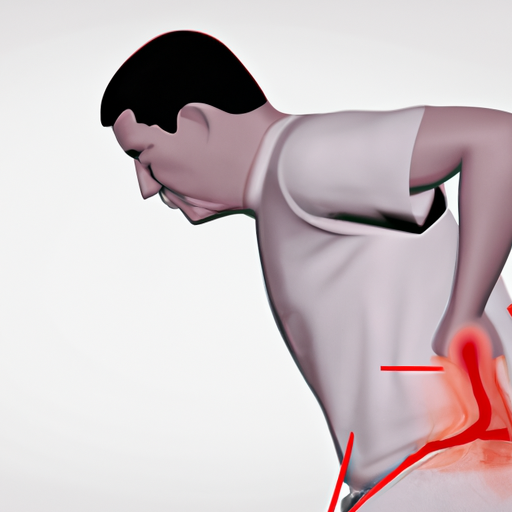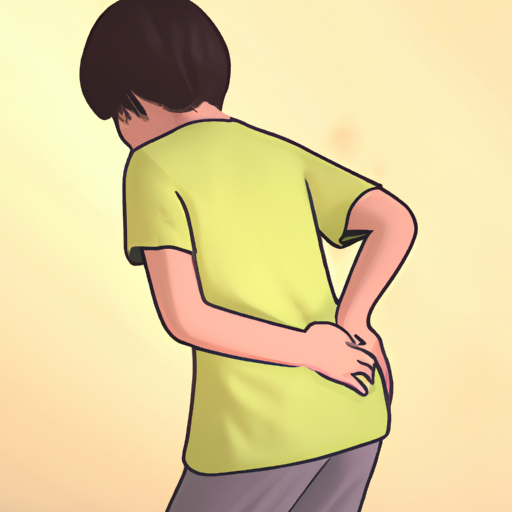-
Table of Contents
Bladder spasms refer to sudden, involuntary contractions of the bladder muscles. They can cause discomfort, urgency, and frequent urination. Understanding the causes, symptoms, and treatment options for bladder spasms is crucial for effective management. This article provides an overview of the top bladder spasm causes, symptoms, and treatment options.
Common Causes of Bladder Spasms
Bladder spasms can be a distressing and uncomfortable experience for those who suffer from them. These involuntary contractions of the bladder muscles can cause a sudden and urgent need to urinate, as well as pain and discomfort. Understanding the causes, symptoms, and treatment options for bladder spasms is crucial in managing this condition effectively.
There are several common causes of bladder spasms that individuals should be aware of. One of the most prevalent causes is urinary tract infections (UTIs). UTIs occur when bacteria enter the urinary tract and multiply, leading to inflammation and irritation of the bladder. This irritation can trigger bladder spasms and result in frequent and urgent urination.
Another common cause of bladder spasms is interstitial cystitis (IC), also known as painful bladder syndrome. IC is a chronic condition characterized by bladder pain and pressure, as well as frequent urination. The exact cause of IC is unknown, but it is believed to be related to a defect in the protective lining of the bladder, which leads to inflammation and spasms.
Bladder stones can also cause bladder spasms. These stones are hard mineral deposits that form in the bladder. When they become large enough, they can irritate the bladder lining and trigger spasms. In addition to bladder stones, other conditions that can lead to bladder spasms include bladder cancer, bladder diverticulum, and neurological disorders such as multiple sclerosis.
Recognizing the symptoms of bladder spasms is essential in seeking appropriate treatment. The most common symptom is a sudden and intense urge to urinate, even when the bladder is not full. This urgency is often accompanied by pain or discomfort in the lower abdomen or pelvic region. Some individuals may also experience frequent urination, especially at night, and may notice blood in their urine.
When it comes to treating bladder spasms, the approach depends on the underlying cause. For UTIs, antibiotics are typically prescribed to eliminate the infection and reduce inflammation. Pain medications may also be recommended to alleviate discomfort. In the case of IC, treatment options include bladder instillations, which involve the introduction of medication directly into the bladder, as well as oral medications to reduce inflammation and control symptoms.
For bladder stones, treatment may involve medication to dissolve the stones or surgical removal if they are too large. In cases of bladder cancer, treatment options may include surgery, radiation therapy, or chemotherapy, depending on the stage and severity of the cancer. Neurological disorders that cause bladder spasms may require a combination of medications, physical therapy, and lifestyle modifications to manage symptoms effectively.
In addition to medical treatments, there are also lifestyle changes that can help alleviate bladder spasms. These include avoiding bladder irritants such as caffeine, alcohol, and spicy foods, as well as practicing pelvic floor exercises to strengthen the muscles that control urination. Stress management techniques, such as meditation and deep breathing exercises, can also be beneficial in reducing the frequency and intensity of bladder spasms.
In conclusion, bladder spasms can be caused by various factors, including UTIs, interstitial cystitis, bladder stones, and neurological disorders. Recognizing the symptoms and seeking appropriate treatment is crucial in managing this condition effectively. Medical treatments, lifestyle changes, and stress management techniques can all play a role in alleviating bladder spasms and improving quality of life for those affected. If you are experiencing bladder spasms, it is important to consult with a healthcare professional to determine the underlying cause and develop an individualized treatment plan.
Recognizing Symptoms of Bladder Spasms
Bladder spasms can be a distressing and uncomfortable condition that affects many individuals. Understanding the causes, symptoms, and treatment options for bladder spasms is crucial in managing this condition effectively. In this article, we will focus on recognizing the symptoms of bladder spasms, which can help individuals seek appropriate medical attention and find relief.
One of the most common symptoms of bladder spasms is a sudden and intense urge to urinate. This urge can be overwhelming and may occur even when the bladder is not full. Individuals may find themselves rushing to the bathroom frequently, disrupting their daily activities and causing significant inconvenience.
Another symptom of bladder spasms is frequent urination. Individuals may find themselves needing to urinate more often than usual, sometimes even waking up multiple times during the night to use the bathroom. This increased frequency can be disruptive to sleep patterns and overall quality of life.
In addition to the urge and frequency, individuals with bladder spasms may also experience pain or discomfort during urination. This pain can range from mild to severe and may be accompanied by a burning sensation. It is important to note that these symptoms can also be indicative of other urinary tract conditions, so it is essential to consult a healthcare professional for an accurate diagnosis.
Bladder spasms can also cause involuntary contractions of the bladder muscles, leading to leakage or incontinence. This can be embarrassing and emotionally distressing for individuals, impacting their self-esteem and confidence. It is important to remember that incontinence is a common symptom of bladder spasms and seeking medical help can provide effective solutions.
Recognizing these symptoms is the first step towards seeking appropriate treatment for bladder spasms. Consulting a healthcare professional is crucial in determining the underlying cause of the spasms and developing an individualized treatment plan.
Treatment options for bladder spasms can vary depending on the severity and underlying cause of the condition. In some cases, lifestyle modifications such as avoiding bladder irritants like caffeine and alcohol, practicing pelvic floor exercises, and maintaining a healthy weight can help alleviate symptoms.
Medications may also be prescribed to relax the bladder muscles and reduce spasms. These medications can be taken orally or administered directly into the bladder through a catheter. In more severe cases, Botox injections may be recommended to temporarily paralyze the bladder muscles and provide relief.
For individuals who do not respond to conservative treatments, more invasive procedures such as nerve stimulation or surgery may be considered. These options are typically reserved for cases where other treatments have been unsuccessful or when there is an underlying condition that requires intervention.
In conclusion, recognizing the symptoms of bladder spasms is crucial in seeking appropriate medical attention and finding relief. The sudden urge to urinate, increased frequency, pain or discomfort during urination, and incontinence are common symptoms that individuals may experience. Consulting a healthcare professional is essential in determining the underlying cause and developing an individualized treatment plan. Lifestyle modifications, medications, and more invasive procedures are among the treatment options available. By understanding the symptoms and seeking timely treatment, individuals can effectively manage bladder spasms and improve their quality of life.
Effective Treatment Options for Bladder Spasms

Bladder spasms can be a distressing and uncomfortable condition that affects many individuals. These spasms occur when the muscles in the bladder contract involuntarily, causing a sudden and intense urge to urinate. While bladder spasms can be caused by a variety of factors, there are several effective treatment options available to help manage and alleviate the symptoms.
One of the most common causes of bladder spasms is a urinary tract infection (UTI). UTIs occur when bacteria enter the urinary tract and multiply, leading to inflammation and irritation. This irritation can cause the muscles in the bladder to spasm, resulting in the urge to urinate frequently and urgently. Treating the underlying UTI with antibiotics is often the first step in managing bladder spasms caused by this condition.
Another common cause of bladder spasms is interstitial cystitis (IC), also known as painful bladder syndrome. IC is a chronic condition that causes inflammation and irritation of the bladder lining. This inflammation can lead to frequent and intense bladder spasms, as well as pelvic pain and discomfort. While there is no cure for IC, there are several treatment options available to help manage the symptoms. These may include lifestyle changes, such as avoiding trigger foods and beverages, as well as medications to reduce inflammation and relax the bladder muscles.
Bladder spasms can also be a side effect of certain medications, such as diuretics or medications used to treat overactive bladder. These medications work by increasing urine production or relaxing the bladder muscles, respectively. However, in some individuals, these medications can cause the bladder muscles to contract too forcefully, leading to spasms. If medication is the cause of bladder spasms, your healthcare provider may adjust your dosage or switch you to a different medication to alleviate the symptoms.
In addition to these common causes, bladder spasms can also be a symptom of more serious underlying conditions, such as bladder stones or bladder cancer. Bladder stones are hard mineral deposits that can form in the bladder, causing irritation and spasms. Bladder cancer, on the other hand, can cause abnormal growths in the bladder that can irritate the bladder lining and trigger spasms. If bladder spasms are persistent or accompanied by other concerning symptoms, it is important to seek medical attention to rule out these more serious conditions.
When it comes to treating bladder spasms, there are several options available. In addition to treating the underlying cause, medications can be prescribed to help relax the bladder muscles and reduce spasms. These medications may include anticholinergics, which work by blocking the signals that cause the bladder muscles to contract. Additionally, bladder training exercises can be helpful in managing bladder spasms. These exercises involve gradually increasing the time between bathroom visits to help train the bladder to hold urine for longer periods.
In conclusion, bladder spasms can be a bothersome and uncomfortable condition. However, with the right treatment options, it is possible to manage and alleviate the symptoms. Whether caused by a UTI, IC, medication, or an underlying condition, there are effective treatment options available. By working closely with your healthcare provider, you can find the best approach to managing your bladder spasms and improving your quality of life.
Lifestyle Changes to Manage Bladder Spasms
Lifestyle Changes to Manage Bladder Spasms
Bladder spasms can be a distressing and disruptive condition that affects many individuals. These involuntary contractions of the bladder muscles can lead to frequent and urgent urination, as well as discomfort and pain. While medical treatment options are available, making certain lifestyle changes can also help manage bladder spasms effectively.
One of the most important lifestyle changes to consider is maintaining a healthy diet. Certain foods and beverages can irritate the bladder and trigger spasms. It is advisable to avoid or limit the consumption of caffeine, alcohol, spicy foods, and artificial sweeteners. These substances can irritate the bladder lining and exacerbate symptoms. Instead, opt for a diet rich in fruits, vegetables, whole grains, and lean proteins. Drinking plenty of water throughout the day can also help flush out toxins and reduce the likelihood of bladder spasms.
In addition to dietary modifications, managing stress levels is crucial in preventing and managing bladder spasms. Stress can have a direct impact on the body’s nervous system, including the bladder. Engaging in stress-reducing activities such as meditation, deep breathing exercises, or yoga can help relax the body and reduce the frequency and intensity of spasms. It is also important to get enough sleep and practice good sleep hygiene to minimize stress levels.
Another lifestyle change that can make a significant difference is maintaining a healthy weight. Excess weight puts additional pressure on the bladder, which can contribute to spasms. Engaging in regular physical activity and following a balanced diet can help achieve and maintain a healthy weight. It is advisable to consult with a healthcare professional or a registered dietitian to develop an appropriate exercise and nutrition plan.
Furthermore, practicing good bladder habits can help manage bladder spasms effectively. This includes emptying the bladder regularly and completely, as holding urine for extended periods can lead to bladder irritation and spasms. It is also important to avoid straining during urination and to take the time to fully empty the bladder. Additionally, practicing pelvic floor exercises, also known as Kegel exercises, can strengthen the muscles that support the bladder and help prevent spasms.
Lastly, quitting smoking is highly recommended for individuals experiencing bladder spasms. Smoking can irritate the bladder and worsen symptoms. The chemicals in cigarettes can also damage the bladder lining, making it more susceptible to spasms. Quitting smoking can be challenging, but there are various resources available, such as support groups and nicotine replacement therapies, that can assist in the process.
In conclusion, lifestyle changes can play a significant role in managing bladder spasms. By making dietary modifications, managing stress levels, maintaining a healthy weight, practicing good bladder habits, and quitting smoking, individuals can effectively reduce the frequency and intensity of bladder spasms. It is important to remember that these lifestyle changes may not provide immediate relief, and it is advisable to consult with a healthcare professional for a comprehensive treatment plan. With dedication and perseverance, individuals can regain control over their bladder health and improve their overall quality of life.
Natural Remedies for Alleviating Bladder Spasms
Bladder spasms can be a distressing and uncomfortable condition that affects many individuals. These spasms occur when the muscles in the bladder contract involuntarily, causing a sudden and intense urge to urinate. While there are various causes for bladder spasms, including urinary tract infections, bladder stones, and nerve damage, many people seek natural remedies to alleviate their symptoms.
One of the most effective natural remedies for bladder spasms is drinking plenty of water. Staying hydrated helps to flush out any irritants in the bladder and can reduce the frequency and intensity of spasms. It is recommended to drink at least eight glasses of water a day to maintain proper hydration.
In addition to water, certain herbal teas can also provide relief from bladder spasms. Chamomile tea, for example, has anti-inflammatory properties that can help soothe the bladder muscles and reduce spasms. Peppermint tea is another excellent option, as it acts as a muscle relaxant and can alleviate the discomfort associated with bladder spasms.
Another natural remedy for bladder spasms is consuming foods that are rich in antioxidants. Antioxidants help to reduce inflammation in the body, including the bladder, and can therefore alleviate spasms. Some examples of antioxidant-rich foods include berries, leafy greens, and nuts. Incorporating these foods into your diet can have a positive impact on your bladder health.
In addition to dietary changes, certain lifestyle modifications can also help alleviate bladder spasms. Avoiding caffeine and alcohol, for example, can reduce irritation in the bladder and minimize the occurrence of spasms. It is also important to practice good bathroom habits, such as emptying the bladder completely and avoiding holding urine for extended periods.
For individuals seeking immediate relief from bladder spasms, hot compresses can be a simple and effective solution. Applying a hot compress to the lower abdomen can help relax the bladder muscles and alleviate spasms. Alternatively, taking a warm bath can have a similar soothing effect.
While natural remedies can provide relief for many individuals, it is important to consult with a healthcare professional if bladder spasms persist or worsen. They can help determine the underlying cause of the spasms and recommend appropriate treatment options. In some cases, medication may be necessary to manage the symptoms effectively.
In conclusion, bladder spasms can be a bothersome condition, but there are several natural remedies that can help alleviate the discomfort. Staying hydrated, consuming herbal teas, and incorporating antioxidant-rich foods into your diet are all effective ways to reduce the frequency and intensity of spasms. Making lifestyle modifications, such as avoiding caffeine and alcohol, and practicing good bathroom habits can also have a positive impact. For immediate relief, hot compresses or warm baths can provide soothing relief. However, it is important to seek medical advice if symptoms persist or worsen. With the right approach, bladder spasms can be managed effectively, allowing individuals to regain control of their bladder health.
Q&A
1. What are the top causes of bladder spasms?
The top causes of bladder spasms include urinary tract infections, bladder infections, bladder stones, interstitial cystitis, and neurological conditions such as multiple sclerosis.
2. What are the common symptoms of bladder spasms?
Common symptoms of bladder spasms include sudden and intense urges to urinate, frequent urination, pain or discomfort in the lower abdomen or pelvic area, and involuntary contractions of the bladder muscles.
3. How are bladder spasms diagnosed?
Bladder spasms are typically diagnosed through a combination of medical history evaluation, physical examination, urine tests, and imaging studies such as ultrasound or cystoscopy.
4. What are the treatment options for bladder spasms?
Treatment options for bladder spasms may include medications such as anticholinergics or muscle relaxants, lifestyle modifications, bladder training techniques, pelvic floor exercises, and in some cases, surgical interventions.
5. Can bladder spasms be prevented?
While it may not be possible to prevent all cases of bladder spasms, certain preventive measures can help reduce the risk. These include maintaining good hygiene, staying hydrated, avoiding bladder irritants such as caffeine and alcohol, and managing underlying conditions that can contribute to bladder spasms.In conclusion, bladder spasms can be caused by various factors such as urinary tract infections, bladder infections, bladder stones, and neurological conditions. The symptoms of bladder spasms may include sudden and intense urges to urinate, frequent urination, and pain or discomfort in the bladder area. Treatment options for bladder spasms may include medication, lifestyle changes, and bladder training techniques. It is important to consult a healthcare professional for an accurate diagnosis and appropriate treatment plan.
Hi, I’m Pablo Garduno. I am a biohacking enthusiast, and Head Writer of SanDiegoHealth.org. I write the majority of the content on this site, and appreciate you taking the time to read my work.

